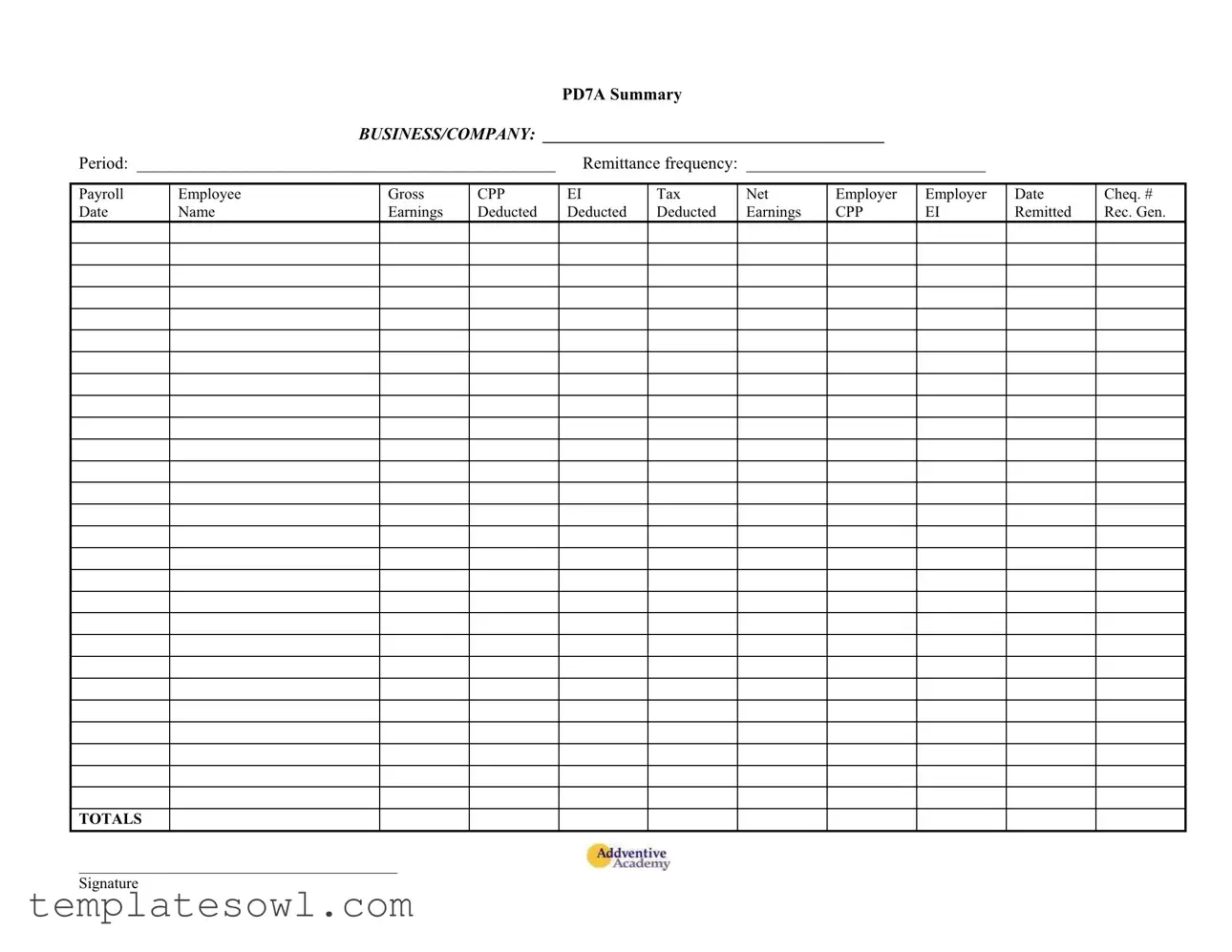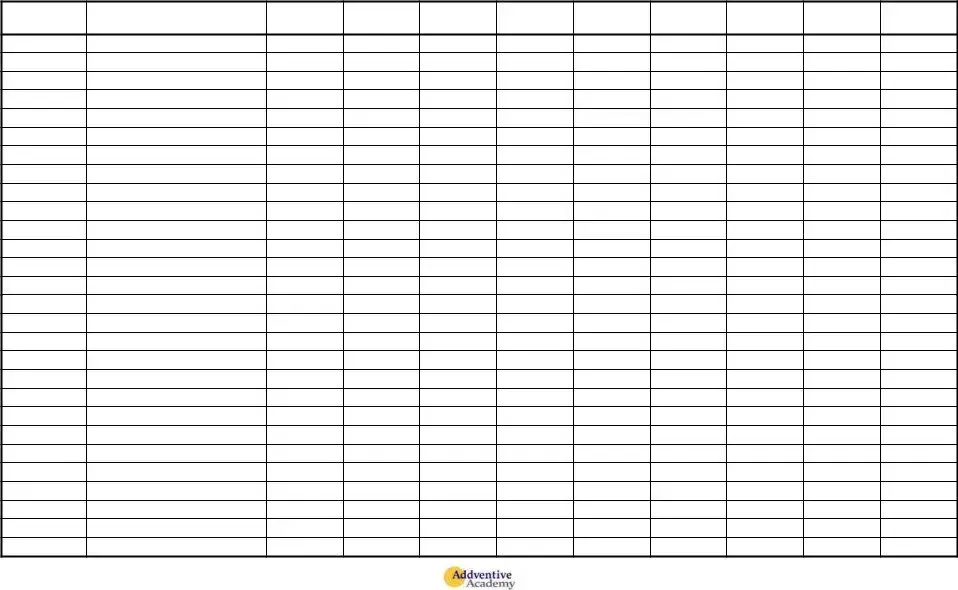The Pd7A Spreadsheet form is crucial for businesses when reporting payroll taxes. However, several common mistakes can lead to incorrect submissions and potential penalties. Awareness of these errors helps ensure compliance and accuracy.
One frequent mistake is failing to complete the business or company name section. Without this information, tax authorities cannot associate the submission with a specific entity, leading to delays or misallocations of payments.
Another error involves neglecting to specify the remittance frequency. Payroll periods can vary, and clearly indicating the frequency ensures that the proper timing for submissions is understood by all parties involved.
Many individuals mistakenly overlook entering all employee names or only list partial names. This omission can create confusion and mislead tax authorities when trying to verify records. Every employee paid should be accurately named to avoid discrepancies.
The gross earnings section often contains errors. Employers sometimes enter incorrect amounts, either due to simple miscalculations or failure to account for bonuses and overtime. Accurate reporting of gross earnings is essential for calculating appropriate deductions.
CPP and EI deductions can also be miscalculated. Some people fail to apply the correct rates or reference tables, leading to under or over deducting from employees’ paychecks. Ensuring the most current rates are applied helps maintain compliance.
Additionally, individuals may forget to account for net earnings after all deductions. This oversight affects not only employee pay but also reporting accuracy. Each deduction must be considered to arrive at the correct net amount.
When completing the form, it’s vital that the date remitted is clearly noted. Omitting this can create confusion regarding payment timelines, which may affect the company’s standing with tax authorities.
Some individuals misplace or fail to include supporting documentation. This documentation is required for verification, and lacking it may lead to inquiries or penalties from tax offices.
The cheque number should also be included. Forgetting this detail can complicate record-keeping and make tracking payments more difficult, possibly resulting in payment disputes.
Lastly, neglecting to obtain a signature on the form raises validity issues. A missing signature can lead to questions regarding accountability and intent, undermining the integrity of the submission.

